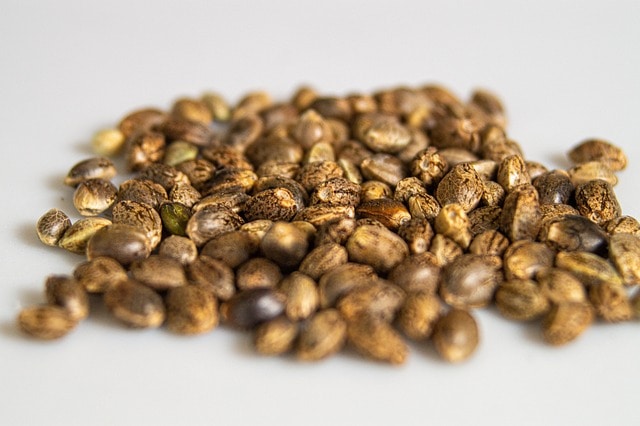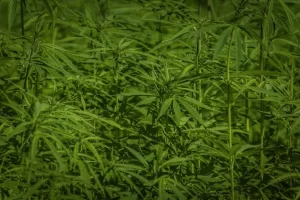Benefits of energy-saving grow lights
Energy-saving grow lights have several benefits for your cannabis plants. Using these lights can help you save on electricity costs in the long run. They also produce less heat, reducing the risk of your plants getting damaged from excessive temperatures. Additionally, energy-saving grow lights are environmentally friendly, as they consume less power compared to traditional lights, reducing your carbon footprint. Lastly, these lights have a longer lifespan, meaning you won’t have to replace them as often, saving you money and hassle in the future.
Types of energy-saving grow lights for cannabis growth
LED grow lights are among the most energy-efficient options for growing cannabis. They produce less heat, which can help save on cooling costs. Another popular option is fluorescent grow lights, which are cost-effective and suitable for smaller grow spaces. Ceramic metal halide (CMH) lights offer a good balance between efficiency and light spectrum for optimal plant growth. Choosing the right grow light depends on factors like the size of your grow area, your budget, and the growth stage of your plants.
Understanding the importance of light spectrum for cannabis plants
The light spectrum is vital for cannabis plants’ growth as different colors of light affect various stages of plant development. Blue light is essential during the vegetative stage as it promotes leaf growth and strong roots. On the other hand, red light is crucial during the flowering stage as it encourages budding and flowering.Investing in grow lights with adjustable spectrums can help you optimize your cannabis growth by providing the right light at the right growth stage.
Energy efficiency and cost savings with LED grow lights
LED grow lights are known for their energy efficiency and cost savings compared to traditional lighting systems. According to research by the Energy Trust of Oregon, LED grow lights can use up to 50% less energy than traditional lighting sources, helping you save on electricity costs. In addition, LED lights have a longer lifespan, reducing the need for frequent replacements. This not only saves you money in the long run but also minimizes maintenance efforts. Switching to LED grow lights can significantly improve your cannabis growth process while reducing your environmental impact and operational expenses.
Best practices for using energy-saving grow lights in cannabis cultivation
To get the most out of your cannabis plants by using energy-saving grow lights, it’s essential to place the lights at the right distance from the plants. Position them closer for seedlings and farther as the plants grow to maintain optimal light intensity. In addition, keep the lights on for 18 to 24 hours each day during the vegetative stage and 12 hours during the flowering stage. Ensure proper ventilation to prevent heat buildup and adjust the light spectrum according to the growth stage of your plants.
How to choose the right wattage for your cannabis grow lights
When selecting grow lights for your cannabis plants, the wattage of the lights plays a crucial role in their growth. Higher wattage lights provide more power and intensity, which can lead to better plant growth and higher yields. Consider the following when deciding on the right wattage for your cannabis grow lights:
- Low-wattage lights (150-250 watts) are suitable for small plants or seedlings.
- Medium-wattage lights (400-600 watts) work well for plants in the vegetative stage.
- High-wattage lights (600-1000 watts or more) are ideal for flowering and maximizing yield.
Remember, the right wattage for your grow lights will depend on the size of your grow space, the stage of growth your plants are in, and your energy efficiency goals.
Positioning and spacing of grow lights for optimal plant growth
To ensure your cannabis plants thrive, position your grow lights about 12 to 18 inches above them. Maintain a consistent distance throughout the growth stages. Spacing the lights evenly over the entire canopy ensures all plants receive equal light distribution, promoting uniform growth. Avoid placing lights too close, as this can lead to light burn, damaging your plants.
Timing and duration of light exposure for cannabis plants
Cannabis plants need about 18 hours of light a day during the vegetative stage and about 12 hours of light during the flowering stage. Providing the right timing and duration of light exposure is crucial for the healthy growth of your cannabis plants. Consistency in the light schedule is key to ensuring optimal growth and maximizing yields.
Monitoring and adjusting light intensity for maximum yield
Cannabis plants need the right amount of light to grow well. Monitoring and adjusting the light intensity are crucial for getting the best harvest from your plants. Keep an eye on how much light your cannabis plants are getting and make changes if needed. Remember: too much or too little light can affect the growth and yield of your plants.
Conclusion: Enhancing cannabis growth through energy-efficient lighting
To wrap things up, using energy-efficient lights is key to improving cannabis growth. LED lights are a popular choice for cannabis cultivation, as they consume less energy and produce less heat, reducing the risk of harming your plants. With the right light spectrum and intensity, your cannabis plants will thrive and produce better yields. Remember, the right balance of light, water, and nutrients is essential for maximizing your cannabis growth potential.













